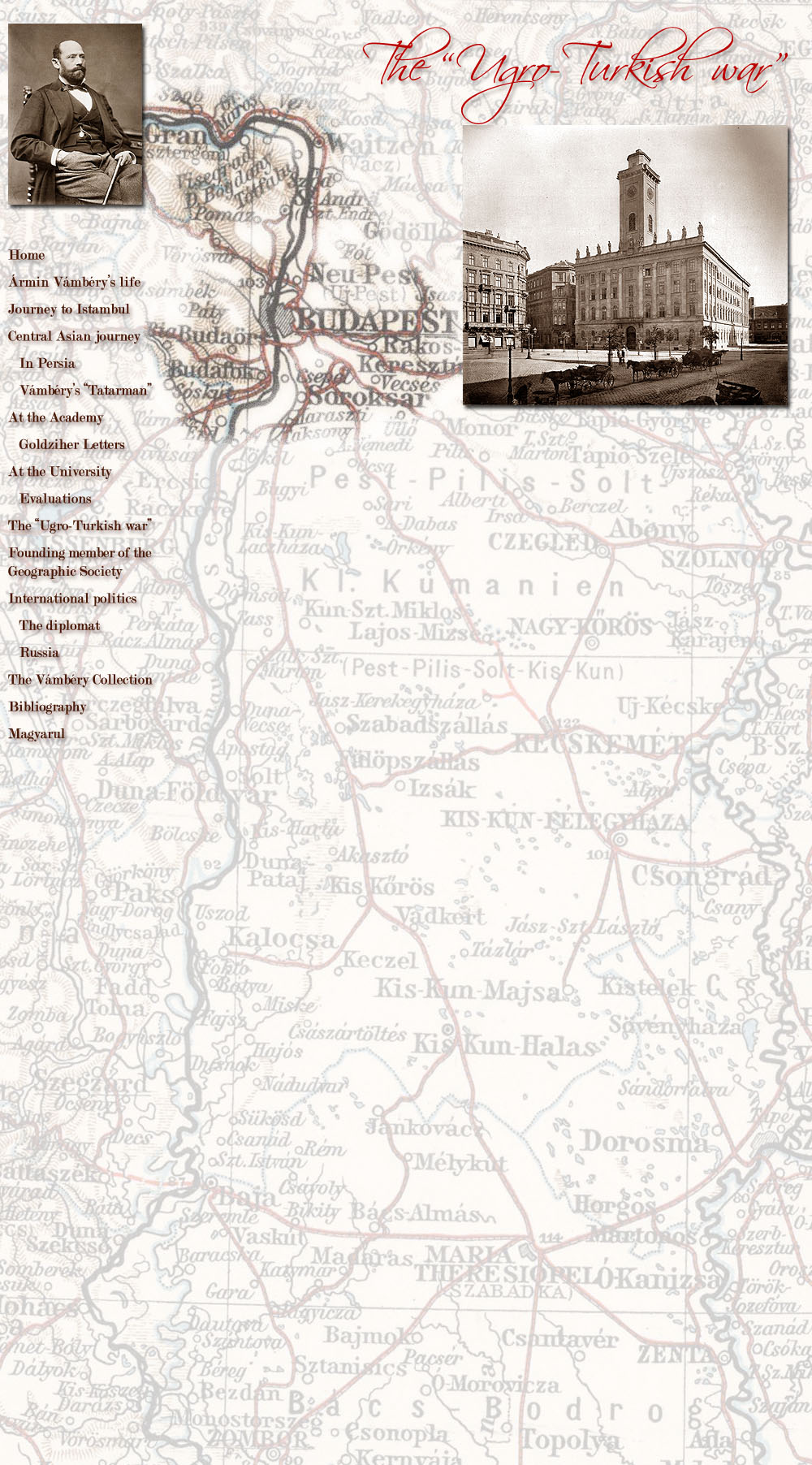People have always been concerned with the origin of the language
they speak, and for each language there have been attempts to explore their
origins and relatives. In case of the Hungarian language, due to its loneliness
in its environment and isolation from its relatives, it is understandable that
they tried to relate it to a variety of languages. In the 16th and 17th century
many thought to recognize the Hebrew as a relative of Hungarian.
1
In the 18th century, at the end of which the fact of Finno-Ugric relationship
became known in Europe, although its theoretical background was not yet
sufficiently developed,
2
two new trends started in Hungary. The one saw the relatives of Hungarian in the
Finno-Ugric languages,
3
while the other linked the Estern origins of Hungarians with the relationship of
its language to those spoken by Huns, Scythians, Avars and Turkic people.
4
The historical and comparative linguistics, which developed by the early 19th
century, created the necessary scientific background and methods for the study
of the origins and relationships of languages, and elaborated the criteria which
are needed to consider two languages as linguistic relatives.
5
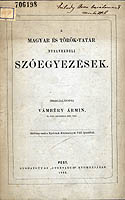 Against this background appeared in 1870 the study of Ármin Vámbéry in the Nyelvtudományi Közlemények,
the linguistic journal of the Hungarian Academy of Sciences: “Magyar és
török-tatár szóegyezések” [Hungarian and Turco-Tatar word correspondences].
6
In this he states that “the kinship of the Hungarian language with the Turco-Tatar
ones is only of second degree, and at the first degree it is only
related to the Finno-Ugric languages, most closely to Vogul”
(p. 114). This study of Vámbéry won the Samuel Prize “among the specifically
linguistic treatises, with six votes against four”.
7
Against this background appeared in 1870 the study of Ármin Vámbéry in the Nyelvtudományi Közlemények,
the linguistic journal of the Hungarian Academy of Sciences: “Magyar és
török-tatár szóegyezések” [Hungarian and Turco-Tatar word correspondences].
6
In this he states that “the kinship of the Hungarian language with the Turco-Tatar
ones is only of second degree, and at the first degree it is only
related to the Finno-Ugric languages, most closely to Vogul”
(p. 114). This study of Vámbéry won the Samuel Prize “among the specifically
linguistic treatises, with six votes against four”.
7
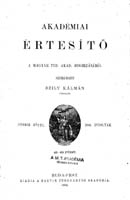 This
writing of
Vámbéry was toughly criticized
8 by József Budenz (1836-1892), head of the Finno-Ugric department
of the University of Pest,
9 to which the offended Vámbéry wrote his book A magyarok eredete
[The origin of the Hungarians].
10 In this, he revoked the above quoted statement, described the
Hungarian language as “Turkish in core”, and anounced war on the “deeply rooted
Finno-Ugric theory” (p. 219). This is how one of the greatest battles of
Hungarian linguistics, the so-called “Ugro-Turkic war” began,
11 and the waves of this debate also reached the large public.
12 Those on Vámbéry’s side (Géza Czirbusz, Henrik Marczali, Aurél P. Török,
Károly Pozder, József Thury, Sándor Várnai) published mainly in the Egyetemes Philologiai Közlöny,
the Földrajzi
Közlöny and the Századok,
This
writing of
Vámbéry was toughly criticized
8 by József Budenz (1836-1892), head of the Finno-Ugric department
of the University of Pest,
9 to which the offended Vámbéry wrote his book A magyarok eredete
[The origin of the Hungarians].
10 In this, he revoked the above quoted statement, described the
Hungarian language as “Turkish in core”, and anounced war on the “deeply rooted
Finno-Ugric theory” (p. 219). This is how one of the greatest battles of
Hungarian linguistics, the so-called “Ugro-Turkic war” began,
11 and the waves of this debate also reached the large public.
12 Those on Vámbéry’s side (Géza Czirbusz, Henrik Marczali, Aurél P. Török,
Károly Pozder, József Thury, Sándor Várnai) published mainly in the Egyetemes Philologiai Közlöny,
the Földrajzi
Közlöny and the Századok,
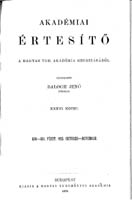 while those opposing him (Ferdinánd Barna, József Budenz, Pál Hunfalvy, Bernát Munkácsi,
József Szinnyei) mainly in the Akadémiai Értesítő, the Nyelvtudományi Közlemények,
the Egyetemes Philologiai
Közlöny and the Magyar Nyelvőr. The debate permeated public life, and
the pros and cons also appeared in the more popular Nemzet and
Budapesti Szemle. In general it can be said that no linguist supported
Vámbéry, except for József Thury, but he was the student of Vámbéry, who
obviously wrote his respective articles under the influence of his master and at
a very young age.
13
while those opposing him (Ferdinánd Barna, József Budenz, Pál Hunfalvy, Bernát Munkácsi,
József Szinnyei) mainly in the Akadémiai Értesítő, the Nyelvtudományi Közlemények,
the Egyetemes Philologiai
Közlöny and the Magyar Nyelvőr. The debate permeated public life, and
the pros and cons also appeared in the more popular Nemzet and
Budapesti Szemle. In general it can be said that no linguist supported
Vámbéry, except for József Thury, but he was the student of Vámbéry, who
obviously wrote his respective articles under the influence of his master and at
a very young age.
13
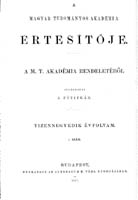 The
replies of
Budenz
14
were so clear for the linguists, that the inclusion of the Hungarian language in
the Turkish language family never arise again in the scientific community.
Nevertheless, today no one would deny, that – as Gyula Németh pointed out in
1930 – Vámbéry “has great merit in the comparison of Hungarian and Turkic
languages”.
15
His idea of the separation of the ethnic group from the language also proved to
be stable over time.
16
An important result of the debate, which was also laden with unjust accusations,
was that after the death of Budenz Vámbéry recognized the Ugric origin of
Hungarian, while maintaining that “the Hungarian people became Turkic in its
culture, and entered the world history already as a Turkic people.”
17
The
replies of
Budenz
14
were so clear for the linguists, that the inclusion of the Hungarian language in
the Turkish language family never arise again in the scientific community.
Nevertheless, today no one would deny, that – as Gyula Németh pointed out in
1930 – Vámbéry “has great merit in the comparison of Hungarian and Turkic
languages”.
15
His idea of the separation of the ethnic group from the language also proved to
be stable over time.
16
An important result of the debate, which was also laden with unjust accusations,
was that after the death of Budenz Vámbéry recognized the Ugric origin of
Hungarian, while maintaining that “the Hungarian people became Turkic in its
culture, and entered the world history already as a Turkic people.”
17
